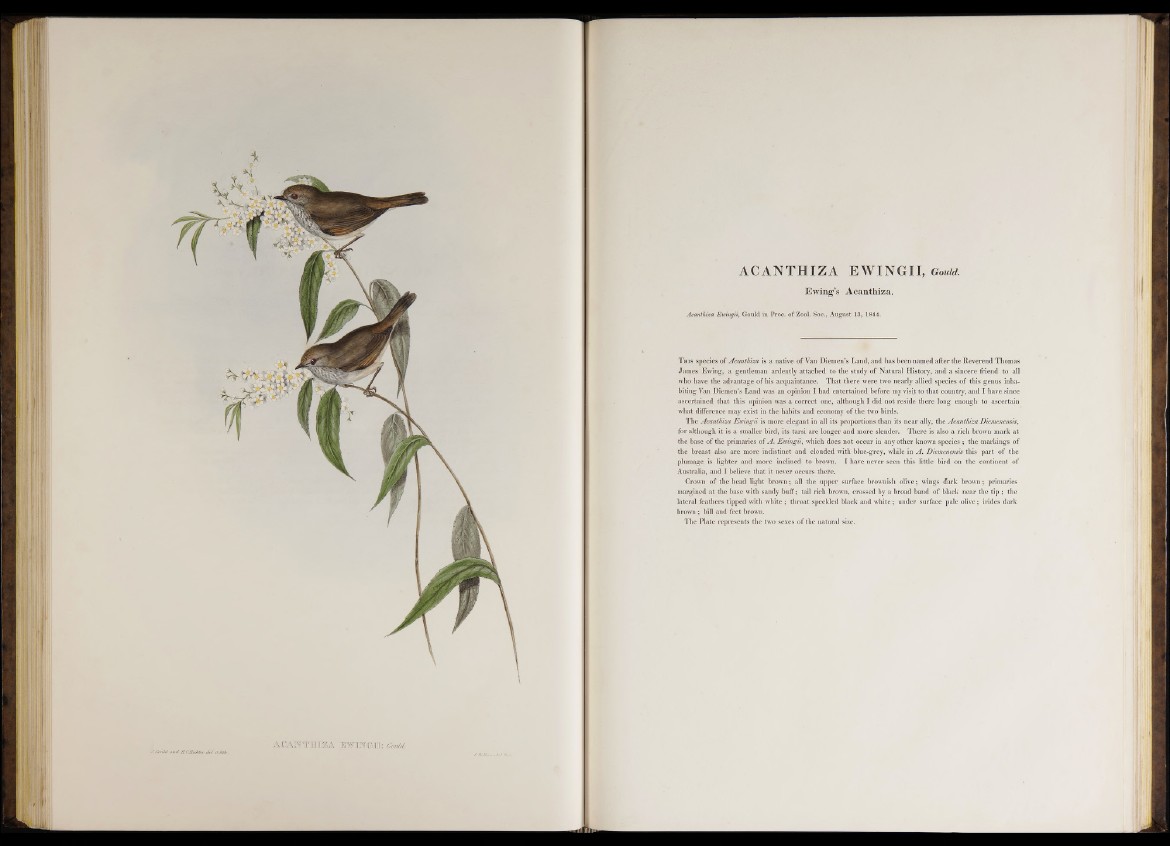
ACAWTISaA EWWGI: G<M
ACANTHIZA EWINGI I , Gould.
Ewing’s Acanthiza.
Acanthiza Ewingii, Gould in Proc. of Zool. Soc., August 13, 1844.
T his species of Acanthiza is a native o f Van Diemen’s Land, and has been named after the Reverend Thomas
James Ewing, a gentleman ardently attached to the study o f Natural History, and a sincere friend to all
who have the advantage of his acquaintance. That there were two nearly allied species o f this genus inhabiting
Van Diemen’s Land was an opinion I had entertained before my visijt to that country, and I have since
ascertained that this opinion was a correct one, although I did not reside there long enough to ascertain
what difference may exist in the habits and economy of the two birds.
The Acanthiza Ewingii is more elegant in all its proportions than its near ally, the Acanthiza Diemenensis,
for although it is a smaller bird, its tarsi are longer and more slender. There is also a rich brown mark at
the base of the primaries of A . Ewingii, which does not occur in any other known species ; the markings of
the breast also are more indistinct and clouded with blue-grey, while in A. Diemenensis this part o f the
plumage is lighter and more inclined to brown. I have never seen this little bird on the continent of
Australia, and I believe that it never occurs there.
Crown o f the head light brown; all the upper surface brownish olive; wings dark brown; primaries
margined at the base with sandy buff; tail rich brown, crossed by a broad band o f black near the tip ; the
lateral feathers tipped with white ; throat speckled black and white; under surface pale olive; irides dark
brown; bill and feet brown.
The Plate represents the two sexes of the natural size.